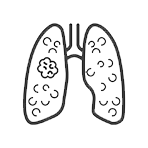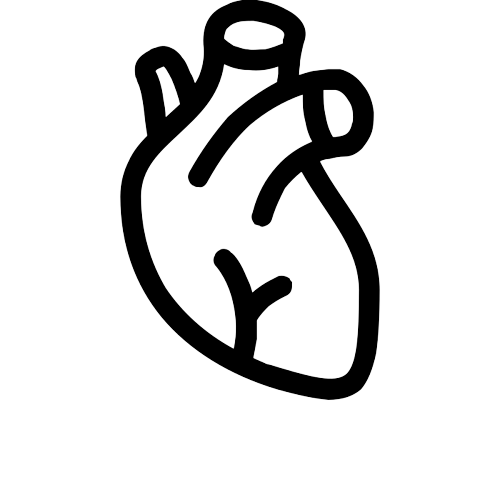Peripheral artery disease
Peripheral artery disease (PAD) is a common artery condition that affects more than 20% of people over the age of 70. Arteries are the blood vessels that carry oxygen-rich blood from the heart to the rest of the body. With PAD, atherosclerotic plaque makes the arteries narrow, which can stop blood from getting to the leg muscles.
Q & A
PAD stands for peripheral artery disease.
Peripheral artery disease (PAD) is a common artery condition that affects more than 20% of people over the age of 70. Arteries are the blood vessels that carry oxygen-rich blood from the heart to the rest of the body. With PAD, atherosclerotic plaque makes the arteries narrow, which can stop blood from getting to the leg muscles. With these plaques present, the blood flow is impaired and muscles might not get enough oxygen, especially when they need more oxygen during a work out. This lack of oxygen can make the legs hurt, cramp, feel heavy, or ache, and can make it hard to walk. The medical term for this type of pain that gets worse when you exercise and goes away when you stop is “claudication.” The good news is that exercise is a great way to treat PAD and the leg symptoms better.
How does exercise make the symptoms of PAD better?
The exact way that exercise helps people with PAD is not fully understood. But research studies have shown again and again that exercise is a good way to help PAD symptoms in the legs. Exercise probably has a number of effects that work together to make it easier to walk, such as reducing inflammation, dilatation of collateral blood vessels to circumvent any narrowing, and changing the structure, function, and metabolism of muscles. Regular exercise “trains” the muscles to utilize the oxygen more effectively.
What is exercise therapy under supervision (SET)?
Supervised exercise therapy (SET) is a program that shares many similariteis with cardiac rehabilitation. It involves going to an outpatient rehabilitation center or a doctor’s office for 30–60 minutes three times a week for 12 weeks. SET is mostly about walking on a treadmill because the general goal is to help the patient walk better. Other modalities include seated arm and leg stepping or cycling. The exercise is performed under supervision of an exercise therapist, nurse, or another trained professional.
The exercise therapist makes a plan for each patient on how to exercise. The plan can be different in terms of how hard the exercises are, how long they last, and how often they are done. During a session, the goal is to walk for 30–45 minutes, not counting breaks. When claudication is triggered by the exercise, the aim is to persist and rest only until the symptom is tolerabble. Overtime, the patient will gain pain free walking time or maximum pain free distance.
How are SETs different from stents?
SET is especially good at relieving the symptoms of claudication. Several research studies have shown that supervised exercise, when done according to best practices, is as effective or more effective than a balloon and stent procedure aka angioplasty or endovascular revascularization for improving walking ability. The notable CLEVER (Claudication: Exercise Vs. Endoluminal Revascularization) study found that SET improved treadmill walking performance more than endovascular revascularization (the balloon and stent procedure).
Some people with PAD may still have leg problems after a few months of exercise and medicine. Should this be the case, it may be necessary to restore blood flow to the leg if the leg roblems limits the lifestyle or working ability of the patient. Patients with severe PAD may also need to rstore blood flow back (revascularization) to heal a wound or relive any pain when they are at rest. But for most people with PAD, exercise is the best place to start because it may improve the symptoms and keep them from having to go through an invasive procedure.
How does progress with exercise for PAD get tracked?
Researchers have looked at a number of ways to measure how well an exercise plan is working, such as quality of life surveys, treadmill tests, and the 6-minute walk test. One or more of these can be used to track progress: the pain-free walking distance or duration (PFWD) is how far a person can walk without feeling any pain in their legs and the maximum walking distance or time (MWD) is how far a person can walk before they have to stop because they are in too much pain. For example, a patient may be able to walk two blocks before she feels a tightness in her lower leg (her PFWD), but she may be able to walk another block before she has to stop (her MWD). When keeping track of PAD symptoms, it is helpful to keep an eye on the PFWD and MWD as a patient enrolls in an exercise program. Most of the time, these measures will get better within the first four to six weeks.
How much physical activity is enough?
All adults should get at least 30 minutes of brisk (moderate-intensity) exercise on most days of the week. Many people with PAD can’t walk enough to get a moderate amount of aerobic exercise because of their leg pain. In this case, a stationary bike or another form of exercise may be used to get the heart rate up and get the benefits of exercise.
Do I need a SET program or can I walk unsupervised on my own?
In general, research studies have shown that SET programs help leg symptoms more than walking at home. Many patients can’t or won’t go to a program in person because they can’t get to it or they don’t want to. In that case, you should definitely work out at home. Although it has not been studied, a combination of SETprogram 3 days a week and home exercise program on the other 4 days should be good for both the legs and the heart health.
What is the best way to walk at home to improve the symptoms of PAD?
Researchers have looked at many different ways to walk. Patients are usually told to walk until they feel moderate to moderately severe pain (like a 3 or 4 on a 0–5 scale), then to stop and rest until the pain goes away completely (to a 0), and then to start walking again. The goal is to start feeling moderate pain within 5–10 minutes of walking. If you don’t feel moderate discomfort after 10 minutes, you should raise the intensity of exercise by increasing the incline or speed of the treadmill.
Keeping track of a patient’s progress is one of the most important parts of any PAD exercise program. The information should be tracked and looked over at each clinic visit. Even though you might not see changes from one day to the next in terms of pain-free and maximum walking distance, you will notice changes from one week to the next.
Summary
Exercise is a great way to treat leg pain caused by peripheral artery disease, and it works very well. A supervised exercise therapy plan can make it much easier to walk and improve the quality of life.















